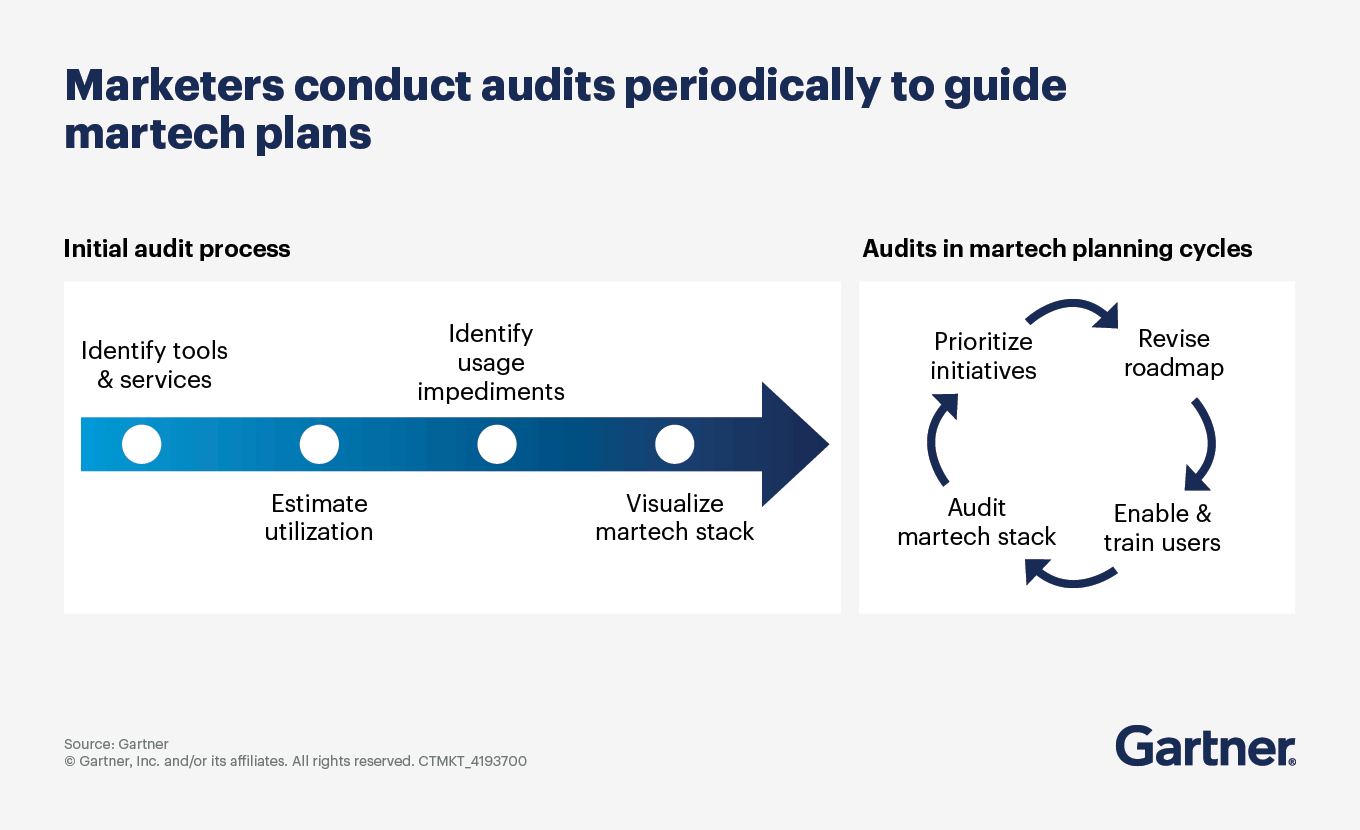The marketing technology stack is in a quiet crisis. Only 49% of tools are actively used, and just 15% of organizations qualify as high performers — those that meet strategic goals and demonstrate positive ROI.
Despite low adoption, CMOs continue to invest in new channels and emerging technologies like generative AI (GenAI). On average, CMOs currently oversee nine marketing channels, with 20% already adopting new ones. Yet they’re also under pressure to reduce martech spend while delivering growth.
High performers prioritize composable stacks and capability-driven measurement to justify investments and scale innovation.
To succeed, CMOs must:
Adopt a composable strategy to prepare for the future of martech by emphasizing a customizable, modular and scalable architecture to increase agility and interoperability
Prioritize measurement of activated capabilities — not just a single vendor or platform
Templatize operations — creating consistent, replicable processes that AI agents can operate within
Key martech strategy questions to ask:
What should our multiyear martech roadmap look like, and how can marketing and IT collaborate to achieve it?
Which tools are redundant or underperforming, and how can we streamline the stack?
How will new technologies support customer journey orchestration?
Where can we consolidate and integrate across teams for greater efficiency?



